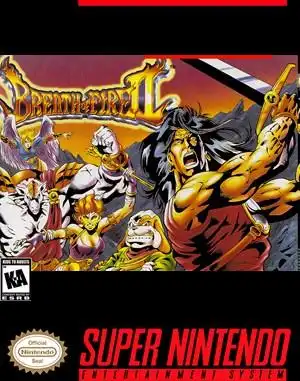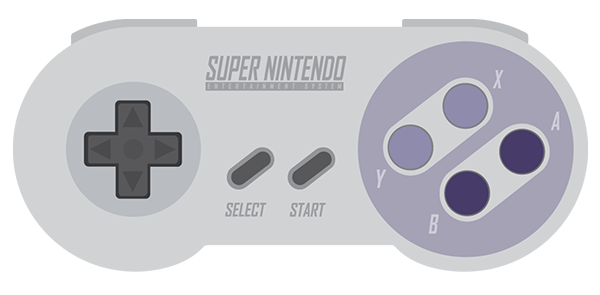Stepping back into the 16-bit era of JRPGs often means revisiting worlds that felt vast and stories that unfolded over dozens of hours. Among the greats that graced the Super Nintendo, Breath of Fire II holds a special, slightly quirky place in the hearts of many retro gamers. Released by Capcom in 1994 in Japan and 1995 in North America, this direct sequel built upon its predecessor's foundation, offering a sprawling adventure filled with discovery, transformation, and a localization that became the stuff of legend.
For those who grew up with the SNES, Breath of Fire II wasn't just another RPG; it was a commitment. A journey following Ryu, a young man from the mysterious Dragon Clan whose life is turned upside down when his family and village seemingly vanish from existence and memory. This personal mystery quickly entwines with a much larger narrative involving a rising religious order, demons, and the fate of the world.
A Classic SNES RPG Journey Begins
At its core, Breath of Fire II delivers the turn-based combat and top-down exploration that defined the genre on the SNES. You'll traverse a vibrant pixelated world, delve into dungeons, interact with townsfolk, and grind a few levels along the way – all par for the course in classic RPGs.
But Breath of Fire II introduced some features that made it stand out:
- Personal Actions: Each character had a unique ability usable outside of battle, like Sten's ability to extend his arm to cross gaps or Katt's skill at breaking certain objects. These added a layer of environmental interaction that was pretty neat.
- TownShip: A truly innovative feature allowing you to build and customize your own town. You could recruit various characters with different architectural styles or shop types to inhabit it, creating a personalized hub.
- Shaman System: This allowed you to fuse certain party members with mystical Shamans, dramatically altering their appearance and stats, often unlocking powerful new abilities. It added significant strategic depth to party composition.
The gameplay loop was familiar yet refined, offering a comfortable, engaging experience for veterans of the genre.
A Memorable Cast of Characters
No great RPG is complete without a compelling party, and Breath of Fire II delivered a diverse crew. Beside the silent protagonist Ryu, you're joined by:
- Bow: Ryu's loyal, dog-like friend and a skilled archer/healer.
- Katt (or Kat): A feisty cat-girl and powerful physical attacker.
- Rand: A tough, armadillo-like character with high defense.
- Nina: A winged sorceress from the first game's royal family, focusing on offensive magic.
- Sten: A mischievous monkey-like character and agile fighter.
- Jean (or Tapeta): A frog prince with transformation abilities.
- Spar (or Lin Poo): A mysterious plant-person with nature magic.
Plus, the immortal sorceress Bleu (Deis) from the first game could optionally join your ranks. Each character brought unique skills and personalities (despite the translation's best efforts) to the table.
The Infamous English Translation: A Feature, Not a Bug?
Now, let's talk about the elephant in the room, or perhaps the armadillo, frog, or monkey: the English localization of Breath of Fire II. Published by Capcom USA themselves, unlike the first game handled by Square, this translation is legendary for all the wrong reasons.
It's not an exaggeration to say it's widely considered one of the poorest translations of its era. Expect:
- Frequent spelling and grammatical errors.
- Awkward, unnatural phrasing that often makes dialogue sound bizarre.
- Inconsistent character and item names (sometimes even within the same conversation!).
- Lines that are plain nonsensical or miss the nuance of the original Japanese.
Why was it so bad? Likely a combination of tight deadlines, limited text space on the cartridge, potential lack of context for translators, and perhaps non-native English speakers working without sufficient editing.
However, for many who played it back in the day, this terrible translation isn't just a flaw; it's part of the charm. The sheer weirdness of the dialogue adds an unintentional layer of comedy and uniqueness to the experience. It's hard not to have fond memories of trying to decipher what a character meant to say or chuckling at a particularly bizarre line reading. It's a time capsule of localization challenges in the 90s.
Finding Your Way Back to Evrai (Where to Play Today)
Want to revisit this classic or experience its unique charm (and translation) for the first time? Thankfully, Breath of Fire II is more accessible now than it has been in years.
The easiest way for many is via Nintendo Switch Online, where it's available as part of the Super NES library. It was also available on the Wii U and New Nintendo 3DS Virtual Console services. Original SNES or Game Boy Advance cartridges are options for collectors, though they can be pricey.
If the notorious translation is a barrier, it's worth noting that dedicated fans have created patches over the years to provide a more accurate and polished script for ROMs. Playing with a fan translation offers a different, perhaps more coherent, experience, but you do miss out on the "authentic" bizarre charm of the original English release.
Why Breath of Fire II Still Holds Up
Despite its localization woes, Breath of Fire II remains a beloved classic for a reason. It offered a lengthy, engaging quest with a memorable party and innovative features like TownShip and Shamans. The story, while sometimes muddled by the translation, tackles surprisingly mature themes for its time.
It's a game that requires patience – random encounters are frequent, and the difficulty can spike – but the satisfaction of exploring its world, powering up your party, and uncovering its secrets is pure retro RPG gold. Whether you play it for nostalgia, for the gameplay, or just to witness the legendary translation firsthand, Breath of Fire II is a journey worth taking.
Frequently Asked Questions
Is Breath of Fire II a direct sequel to the first game?
Yes, Breath of Fire II is set 500 years after the events of the first game and follows Ryu, a descendant of the protagonist from the original.
How long does it take to beat Breath of Fire II? Completion time varies based on play style, but a typical playthrough can range from 30 to 50+ hours, making it a substantial RPG.
Is the English translation really that bad? Yes, the original English translation is widely considered very poor due to numerous errors, awkward phrasing, and inconsistencies. However, for many fans, this adds to the game's unique, nostalgic character.


